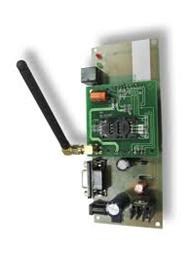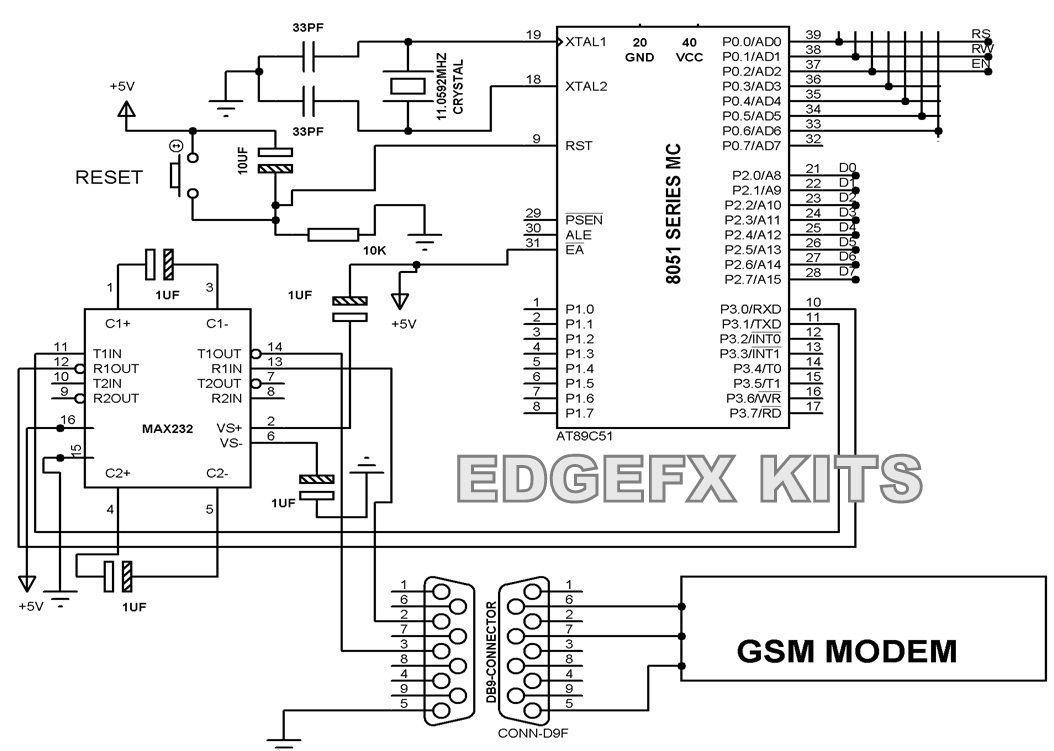GSM is a mobile communication modem; it
is stands for global system for mobile communication (GSM). The idea of
GSM was developed at Bell Laboratories in 1970. It is widely used
mobile communication system in the world. GSM is an open and digital
cellular technology used for transmitting mobile voice and data services
operates at the 850MHz, 900MHz, 1800MHz and 1900MHz frequency bands.
GSM system was developed as a digital
system using time division multiple access (TDMA) technique for
communication purpose. A GSM digitizes and reduces the data, then sends
it down through a channel with two different streams of client data,
each in its own particular time slot. The digital system has an ability
to carry 64 kbps to 120 Mbps of data rates.
There are various cell sizes in a GSM
system such as macro, micro, pico and umbrella cells. Each cell varies
as per the implementation domain. There are five different cell sizes in
a GSM network macro, micro, pico and umbrella cells. The coverage area
of each cell varies according to the implementation environment.
Time Division Multiple Access
TDMA technique relies on assigning
different time slots to each user on the same frequency. It can easily
adapt to data transmission and voice communication and can carry 64kbps
to 120Mbps of data rate.
GSM Architecture
A GSM network consists of the following components:- A Mobile Station: It is the mobile phone which consists of the transceiver, the display and the processor and is controlled by a SIM card operating over the network.
- Base Station Subsystem: It acts as an interface between the mobile station and the network subsystem. It consists of the Base Transceiver Station which contains the radio transceivers and handles the protocols for communication with mobiles. It also consists of the Base Station Controller which controls the Base Transceiver station and acts as a interface between the mobile station and mobile switching centre.
- Network Subsystem: It provides the basic network connection to the mobile stations. The basic part of the Network Subsystem is the Mobile Service Switching Centre which provides access to different networks like ISDN, PSTN etc. It also consists of the Home Location Register and the Visitor Location Register which provides the call routing and roaming capabilities of GSM. It also contains the Equipment Identity Register which maintains an account of all the mobile equipments wherein each mobile is identified by its own IMEI number. IMEI stands for International Mobile Equipment Identity.
Features of GSM Module:
- Improved spectrum efficiency
- International roaming
- Compatibility with integrated services digital network (ISDN)
- Support for new services.
- SIM phonebook management
- Fixed dialing number (FDN)
- Real time clock with alarm management
- High-quality speech
- Uses encryption to make phone calls more secure
- Short message service (SMS)
The security strategies standardized for
the GSM system make it the most secure telecommunications standard
currently accessible. Although the confidentiality of a call and secrecy
of the GSM subscriber is just ensured on the radio channel, this is a
major step in achieving end-to- end security.
GSM Modem
A GSM modem is a device which can be
either a mobile phone or a modem device which can be used to make a
computer or any other processor communicate over a network. A GSM modem
requires a SIM card to be operated and operates over a network range
subscribed by the network operator. It can be connected to a computer
through serial, USB or Bluetooth connection.
A GSM modem can also be a standard GSM
mobile phone with the appropriate cable and software driver to connect
to a serial port or USB port on your computer. GSM modem is usually
preferable to a GSM mobile phone. The GSM modem has wide range of
applications in transaction terminals, supply chain management, security
applications, weather stations and GPRS mode remote data logging.
Working of GSM Module:
From the below circuit, a GSM modem duly
interfaced to the MC through the level shifter IC Max232. The SIM card
mounted GSM modem upon receiving digit command by SMS from any cell
phone send that data to the MC through serial communication. While the
program is executed, the GSM modem receives command ‘STOP’ to develop an
output at the MC, the contact point of which are used to disable the
ignition switch. The command so sent by the user is based on an
intimation received by him through the GSM modem ‘ALERT’ a programmed
message only if the input is driven low. The complete operation is
displayed over 16×2 LCD display.
Intelligent GSM Device for Automation and Security
In these days, the GSM mobile terminal
has become one of the items that are constantly with us. Just like our
wallet/purse, keys or watch, the GSM mobile terminal provides us a
communication channel that enables us to communicate with the world. The
requirement for a person to be reachable or to call anyone at any time
is very appealing.
In this project, as the name says
project is based on GSM network technology for transmission of SMS from
sender to receiver. SMS sending and receiving is used for ubiquitous
access of appliances and allowing breach control at home. The system
proposes two sub-systems. Appliance control subsystem enables the user
to control home appliances remotely and the security alert subsystem
gives the automatic security monitoring.
The system is capable enough to instruct
user via SMS from a specific cell number to change the condition of the
home appliance according to the user’s needs and requirements. The
second aspect is that of security alert which is achieved in a way that
on the detection of intrusion, the system allows automatic generation of
SMS thus alerting the user against security risk.
Circuit Representation of Intelligent GSM Device for Automation and Security:
GSM will allow communication anywhere,
anytime, and with anyone. The functional architecture of GSM employing
intelligent networking principles, and its ideology, which provides the
development of GSM is the first step towards a true personal
communication system that enough standardization to ensure
compatibility.










No comments:
Post a Comment